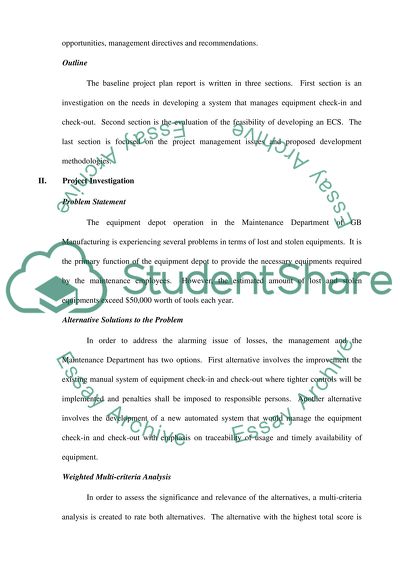Cite this document
(Baseline Project Plan for GB Manufacturing Equipment Check-Out System Case Study, n.d.)
Baseline Project Plan for GB Manufacturing Equipment Check-Out System Case Study. Retrieved from https://studentshare.org/information-technology/1553471-information-systems-analysis-case-study-analysis
Baseline Project Plan for GB Manufacturing Equipment Check-Out System Case Study. Retrieved from https://studentshare.org/information-technology/1553471-information-systems-analysis-case-study-analysis
(Baseline Project Plan for GB Manufacturing Equipment Check-Out System Case Study)
Baseline Project Plan for GB Manufacturing Equipment Check-Out System Case Study. https://studentshare.org/information-technology/1553471-information-systems-analysis-case-study-analysis.
Baseline Project Plan for GB Manufacturing Equipment Check-Out System Case Study. https://studentshare.org/information-technology/1553471-information-systems-analysis-case-study-analysis.
“Baseline Project Plan for GB Manufacturing Equipment Check-Out System Case Study”. https://studentshare.org/information-technology/1553471-information-systems-analysis-case-study-analysis.


